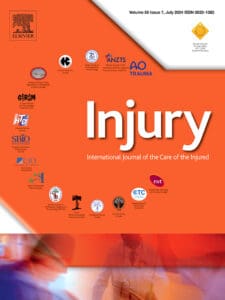Lethal injuries in single stabs to the trunk – A study on homicides and suicides in Sweden

Introduction
Homicides using knives or other sharp objects are the most common type of homicide in Europe, and the second most common type of homicide worldwide. In contrast, suicides using sharp objects are rarer, constituting only a few per cent of all suicides in western countries. We investigated single stab injuries to the trunk in both homicides and suicides to assess differences in extent of injuries and in medical care, which could be of value for trauma management, public health and forensic assessment.Methods
We identified all cases in Sweden between 2010 and 2021 that died of a single stab to the trunk, in either a homicide (n = 94) or a suicide (n = 45), and that were the subject of a forensic autopsy. We obtained data on demographics, hospital care and injured structures. To assess the severity of injuries, we applied AIS (Abbreviated Injury Score) and NISS (New Injury Severity Score). The inter-rater reliability of NISS between two raters was evaluated with intra-class correlation (ICC), with 95 % confidence intervals (CI). The data was analysed using Fisher's exact test, Mann-Whitney U test and logistic regression models.Results
The inter-rater reliability between the two NISS raters showed an ICC of 0.87 (95 % CI 0.68−0.95). We observed a larger variation of injuries in suicides, with a higher proportion of both unsurvivable (NISS 75) and minor injuries (NISS ≤ 8) (66.7 % and 8.9 % respectively) compared to in homicides (46.8 % and 0 % respectively). We observed a larger proportion of injuries to the heart in suicides (68.9% vs. 46.8 %, p = 0.018). In homicides, injuries involving vessels (52.1% vs. 13.3 %, p < 0.001) and hospital care (56.4 % vs. 8.9 %, p < 0.001) were significantly more common compared to suicides.Discussion and conclusion
Causation (self-inflicted or assaults) seems to be associated with characteristics of injury and the likelihood of receiving hospital care. These findings could potentially be valuable for trauma management and forensic assessment of manner of death, however, determining the mortality of the injuries would require a comparison group comprising injured survivors.
Marie Berg von Linde, Stefan Acosta, Ardavan M. Khoshnood, Carl Johan Wingren
2024
Injury, 55(8):111694
